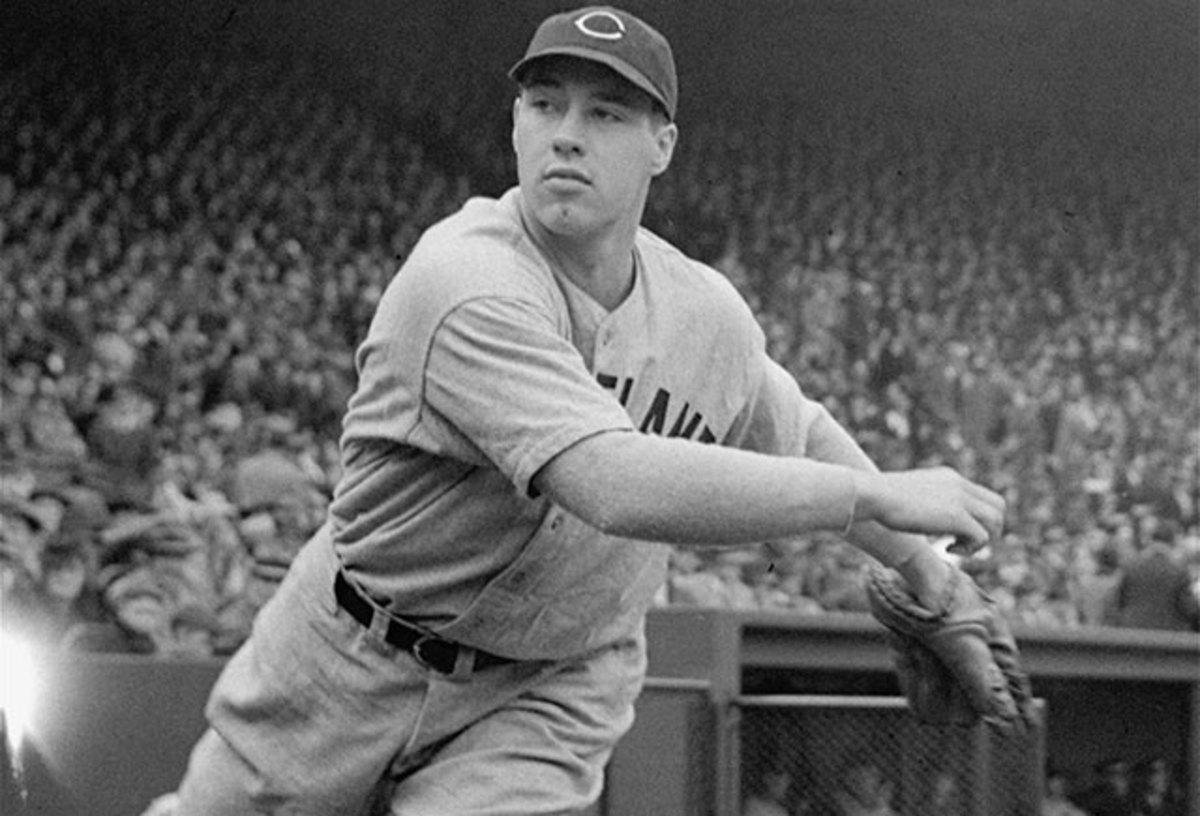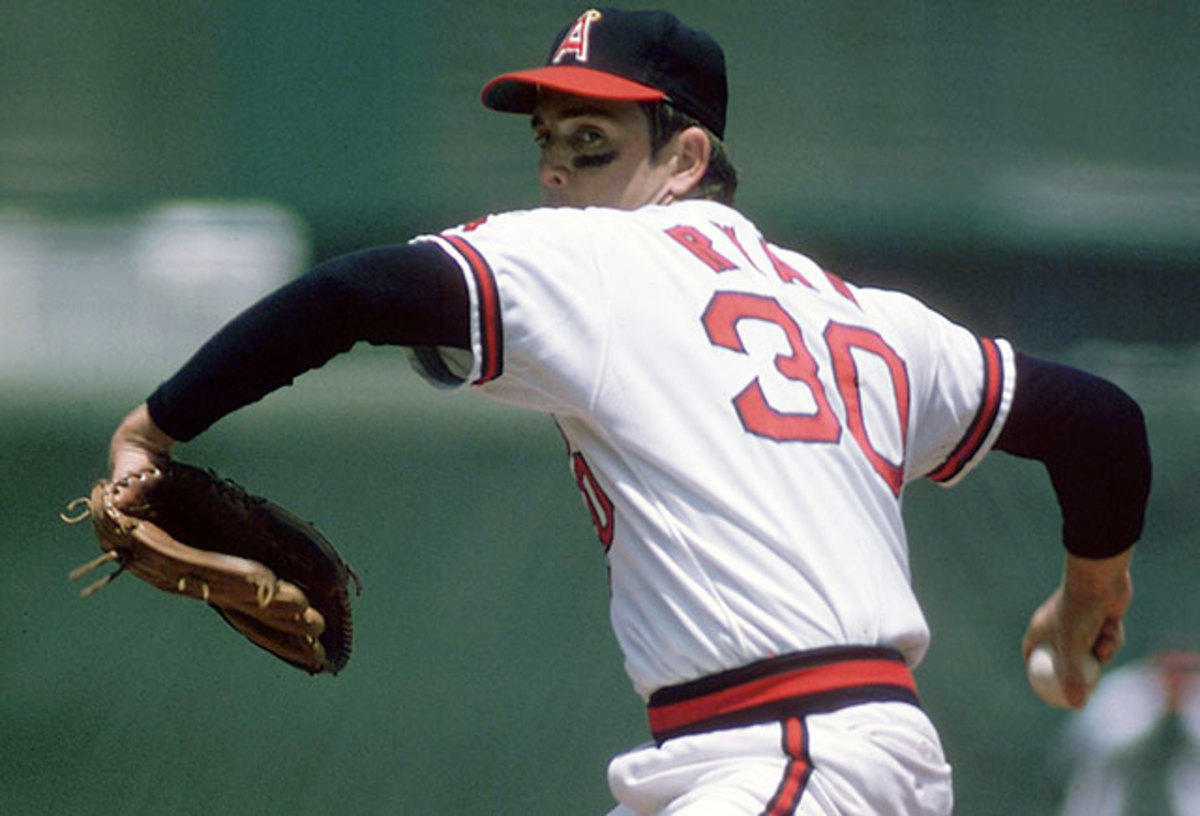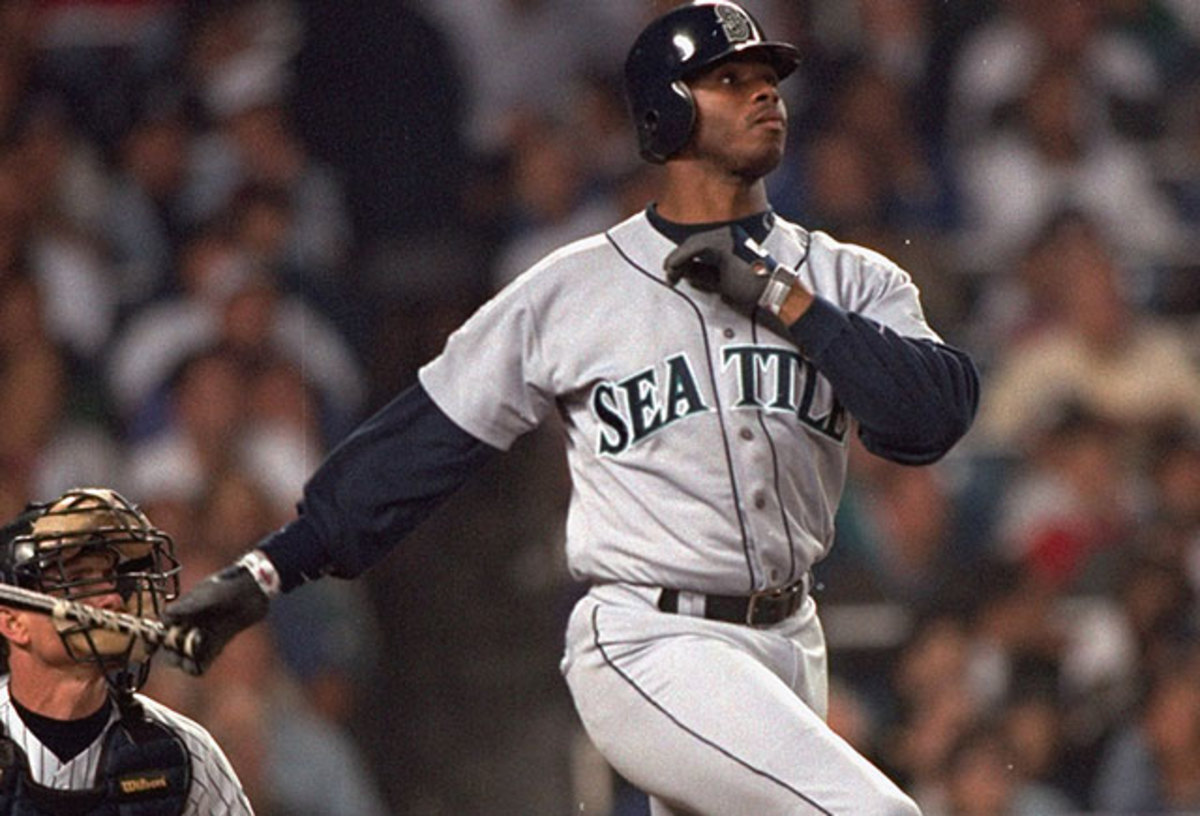Picking best Hall of Fame position player/pitcher pair for each AL team

On Sunday, Ken Griffey Jr will be inducted into the National Baseball Hall of Fame in Cooperstown, a well-deserved honor for a player who bashed 630 career home runs (sixth all-time), won 10 Gold Gloves, made 13 All-Star teams and set a record by receiving 99.3% of the writers' vote on the 2016 ballot. Not only will Griffey become the first No. 1 draft pick to be inducted, but he'll also be the first honoree with a Mariners cap on his plaque, as Class of 2015 member Randy Johnson went in as a Diamondback.
Given that the Mariners are an expansion team that began play in 1977, it's not surprising that they have a limited number of connections to Cooperstown; the only other enshrined position player even to suit up for Seattle is Rickey Henderson, who played 92 games there in 2000 at age 41. Many of the Junior Circuit's teams aside from the original eight that comprised the league from 1901 to '60 have failed to produce even one home-grown Hall of Famer.
What follows here is a consideration of each team's greatest enshrined position player and pitcher—not necessarily drafted and developed by the team, and not necessarily wearing its cap on a bronze plaque, but ideally having spent crucial parts of their careers with that franchise. For this exercise, I'm guided by WAR and JAWS (which you can read about here) but not limited to them; milestones, postseason play and historical importance are also factors here. The teams are listed alphabetically; I'll tackle the National League in a separate column later this week.
Baltimore Orioles/St. Louis Browns
Position Player: Cal Ripken Jr., SS (1981–2001)
Pitcher: Jim Palmer (1965–67, '69–84)
Even though the franchise didn't play its first season in Baltimore until 1954 after a mostly dreadful run as the Browns, this one's an easy call on both fronts, as the two picks are franchise icons. Ripken—who tallied 3,184 hits, 431 homers and a record 2,632 consecutive games played during 21 seasons as an Oriole—ranks third among shortstops in WAR (95.5) and JAWS (75.8). Palmer notched 268 wins, took home three Cy Young awards and helped the O's to six pennants and three championships during his 19-year career, racking up 68.1 WAR.
Boston Red Sox
Position Player: Ted Williams, LF (1939–60)
Pitcher: Cy Young (1901–08)
Williams, a six-time batting champion and two-time MVP, is an easy choice. There's no telling what kind of numbers he'd have put up beyond his 2,654 hits and 521 homers had he not spent three full years serving in the military for World War II and most of two others for the Korean War; as it is, his 123.1 WAR ranks 11th all-time, and both that and his 96.2 JAWS are second at the position.
The tougher call with the Red Sox is for the pitchers, where 2015 honoree Pedro Martinez has a case, having earned two of his three Cy Young awards in his seven seasons (1998–2004) with team via two of the greatest modern seasons in memory ('99 and 2000). That said, Young himself spent eight mostly dominant years with the nascent Sox: He netted 192 of his record 511 wins there, lead the AL in several categories during the league's first three seasons, and, at 36 years old, helped Boston to victory with two complete-game wins in the first World Series in 1903. He's got the WAR edge over Pedro for Boston, too (66.2 to 53.8).
• Verducci: David Ortiz on why his decision to retire is absolutely final
Chicago White Sox
Position Player: Frank Thomas, 1B (1990–2005)
Pitcher: Ed Walsh (1904–16)
You can make a case for shortstop Luke Appling, who spent all 20 seasons of his career (1930–43 and '45–50) with the Sox and rapped out 2,749 hits, won two batting titles and ranks ninth at the position in JAWS. He compiled more WAR than Thomas during their South Side tenures (74.5 to 68.2), but the Big Hurt nonetheless gets the nod over Old Aches and Pains for his two MVP awards and early-career dominance; he hit 448 of his 521 homers for Chicago. Furthermore, while Thomas missed the team's 2005 championship run due to injury, he was part of two other Chicago postseason teams; Appling's Sox, meanwhile, never made the postseason and rarely rose above .500.
Pitching-wise, it's a close three-way race featuring two pitchers whose careers overlapped with Appling: Red Faber (68.4 WAR, 254 wins from 1914 to '33), Ted Lyons (67.2 WAR and 260 wins from '23 to '46) and Walsh (63.4 WAR and 195 wins). But Big Ed was the only one who was a dominant force in his day, posting a 1.81 ERA in 2,946 1/3 innings for the team and helping the 1906 "Hitless Wonders" upset the crosstown powerhouse Cubs in the World Series.

Cleveland Indians
Position Player: Napoleon Lajoie, 2B (1902–14)
Pitcher: Bob Feller (1936–56)
Though he came to stardom in Philadelphia, Lajoie was the nascent AL's premier player: He won four straight batting titles (1901–04), led the league in WAR six times from '01 to '08 and even lent his name to the team (the Naps) from '03 to '14 before they adopted their Indians nickname. "Rapid Robert" Feller was the fastball phenom of his day. He debuted at age 17 in 1936 and struck out 17 batters in a game later that season, going on to lead the league in punchouts seven times and in wins six times in a career interrupted by World War II. Like Williams, we can only imagine how far he'd have gone beyond his 266 wins, 2,581 strikeouts and 65.2 WAR had he not spent three-plus years serving his country.
Detroit Tigers
Position Player: Ty Cobb, CF (1905–26)
Pitcher: Hal Newhouser (1939–53)
"The Georgia Peach" collected 3,900 hits, won 12 batting titles and led AL position players in WAR five times during his 22-year run in Detroit, though the Tigers lost all three World Series they played in from 1907 to '09. He received the highest share of the vote (98.2%) in the first Hall of Fame class in 1936. Newhouser, meanwhile, thrived for the Tigers in the mid-1940s, when many stars were in the military. He won-back-to-back MVP honors in 1944–45, pitched the Tigers to a championship in the latter season and led the league in wins four times and in WAR three times during his 15-year tenure in Detroit.
• Which 35-and-over veterans have the best shot at Hall of Fame honors?
Houston Astros
Position Player: Craig Biggio, 2B (1988–2007)
Pitcher: Nolan Ryan (1980–88)
While he didn’t outdo fellow Killer B Jeff Bagwell in WAR (65.1 to 79.6), Biggio is the one who’s enshrined, and he’s a member of the 3,000 hit club as well. Ryan left the Angels after the 1979 season via free agency and became the first player to average at least $1 million a year via a four-year, $4.5 million deal. He spent nine years with the Astros, helping them to their first three playoff berths, throwing his record-breaking fifth no-hitter and generally refining his work on the mound while wearing the rainbow uniform.
Kansas City Royals
Position Player: George Brett, 3B (1973–93)
Pitcher: Gaylord Perry (1983)
No player is more closely identified with the Royals than Brett, who in his 21-year career collected 3,154 hits, won three batting titles and an MVP award while helping the 1969 expansion franchise make the playoffs seven times from '76 to '85, winning its first championship in the last of those seasons. At the other end of the spectrum, the roguish Perry brought his spitball act—and yes, a lot of times it was simply an act designed to plant the suggestion in the heads of opposing batters—to Kansas City for the final stop of his 22-year career, though he pitched just 14 games for the Royals, with four wins and 0.5 WAR.

Los Angeles Angels of Anaheim
Position Player: Rod Carew, 1B (1979–85)
Pitcher: Nolan Ryan (1972–79)
For as much of owner Gene Autry’s money that the Angels would spend trying to buy a championship during the early years of free agency, they didn’t pay to keep Ryan. Los Angeles stole Ryan from the Mets in exchange for an over-the-hill Jim Fregosi in December 1971 and watched him develop into a famous fireballer who threw four no-hitters and led the AL in strikeouts seven times in his eight-year tenure, setting a single-season record with 383 whiffs in '73.
As for position players: Someday, Mike Trout could rank as the Angels' signature Hall of Famer, but until then, the spot is occupied by Carew, who spent the last seven seasons of his career in Anaheim. There, he made six All-Star teams and two postseason appearances and collected his 3,000th hit in 1985.
Minnesota Twins/Washington Senators
Position Player: Rod Carew, 2B (1967–78)
Pitcher: Walter Johnson (1907–27)
Before heading west, Carew won seven batting titles as well as AL Rookie of the Year and MVP honors for the Twins, most of that production coming before he shifted off the keystone. His 63.7 WAR edges that of slugger Harmon Killebrew (60.5). As for the pitching, with apologies to personal favorite Bert Blyleven, you have to go back to the franchise’s Washington roots to recognize Johnson. By far the hardest thrower of his day, the Big Train held the all-time strikeout record (3,509) from 1921 until '83, and he’s No. 1 in the JAWS rankings at pitcher, edging out Young.
• Hall of Fame chances for 12 of baseball's best under-35 stars
New York Yankees
Position Player: Babe Ruth, RF (1920–34)
Pitcher: Whitey Ford (1950, '53–67)
Though he first made his mark as a pitcher with the Red Sox, it was with the Yankees where Ruth changed the game by emphasizing the long ball. He led the league in homers 10 times in New York, broke his own single-season record three times and helped the team to seven pennants and four championships. The lefty Ford, who pitched for the Yankees for 16 seasons, won 236 games and set several World Series records, helping the team to 11 pennants and six championships. He was the MVP of the 1961 Series, during which he broke Ruth’s scoreless innings streak, which he would further to 32 in '64.
Oakland Athletics
Position Player: Rickey Henderson (1979–84, '89–93, '94–95, '98)
Pitcher: Lefty Grove (1925–33)
Drafted and developed by the A’s, Henderson spent parts of 14 seasons during four separate stints in Oakland, carving out a niche as the greatest leadoff hitter of all time. He broke both the single-season and career stolen base records of Lou Brock while wearing the green and gold, in 1982 and ‘91 respectively, and starred on the ‘89 champions and ‘90 pennant winners. Grove, though his win and WAR totals (195 and 65.2, respectively) trail those of Eddie Plank (284 and 73.7), built a reputation as the game’s greatest southpaw during his run in Philadelphia. He lead the AL in strikeouts in the first seven of those years, with five ERA leads, four win leads, two Triple Crowns and a pair of championships.

Position Player: Ken Griffey Jr. (1989–99, 2009–10)
Pitcher: Randy Johnson (1989–98)
I covered Griffey above. Johnson, whom the Mariners stole from the Expos in May 1989, evolved from a 6'10" freak of nature to a 6'10" freak of nature who could dominate opposing hitters during his decade in Seattle. He won the first of his five Cy Youngs with the team, led the league in whiffs four times and helped the Mariners to their first postseason series victory in the 1995 AL Division Series over the Yankees.
Tampa Bay Rays
Position Player: Wade Boggs (1998–99)
Pitcher: None
The 1998 expansion team has had just one Hall of Famer pass through the organization: the transplanted Boggs, who collected his 3,000th hit with the team in '99. In signing with the team at the tail end of his 18-year career, he allegedly agreed to go into the Hall as a Devil Ray, but he’s wearing the Boston B on his plaque.
Meanwhile, no Hall pitcher has played for the Rays—and no, Boggs’s stint as an emergency knuckleballer with the Yankees doesn’t count. Someday, maybe David Price will represent them. On that note, third baseman Evan Longoria (45.5 career WAR/40.1 peak WAR/42.8 JAWS) deserved a mention in Tuesday’s piece on mid-career players progressing towards Cooperstown: His peak score is 2.6 wins shy of the Hall standard and should draw closer in the midst of this year’s resurgence.
Texas Rangers
Position Player: Nobody (yet)
Pitcher: Fergie Jenkins (1974–75, '78–81)
Even including their time in Washington, no currently enshrined position player has played for this franchise, though six pitchers have. That will change soon: Future Hall of Famer Adrian Beltre will likely collect his 3,000th hit as a Ranger in 2017, and Ivan Rodriguez, who made 10 All-Star teams and won 10 Gold Gloves for the team during his 1991–2002 run, will be Hall eligible that year. Rodriguez ranks third at the catcher position in JAWS.
As for the pitchers, rather than call upon Ryan—who threw two no-hitters for the team and furthered his all-time strikeout lead into the stratosphere—for a third team, I’m going with Jenkins. He won 93 games and totaled 21.9 WAR in two stints with the team, covering four of Texas' first five finishes of .500 or better.
Toronto Blue Jays
Position Player: Roberto Alomar, 2B (1990–93)
Pitcher: Phil Niekro (1987)
Of the six Hall of Famers who have spent time with the Blue Jays, the only one to do so in his prime was the slick-fielding Alomar. He was acquired from the Padres in December 1990, just before he turned 23, and turned in five All-Star/Gold Glove seasons, helping the team win back-to-back World Series in '92 and '93 before departing for Baltimore via free agency. As for Hall pitchers, the only option is Niekro. The 48-year-old knuckleballer threw three games for Toronto with an 8.25 ERA in 1987, his final season, before being released and picked up by the Braves for one last start.
